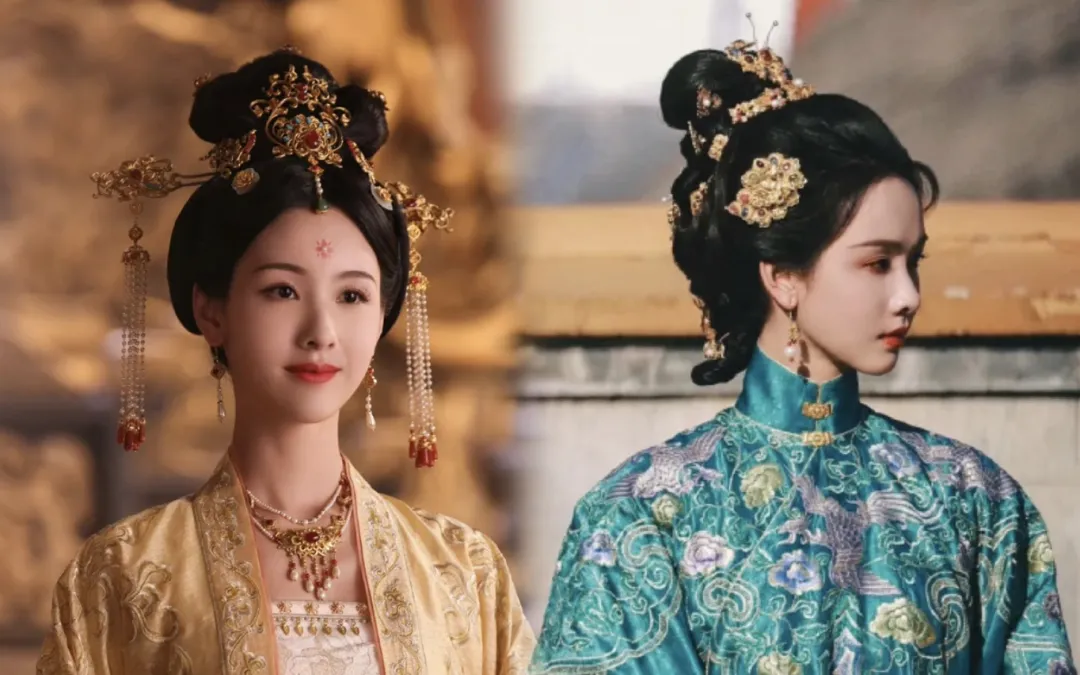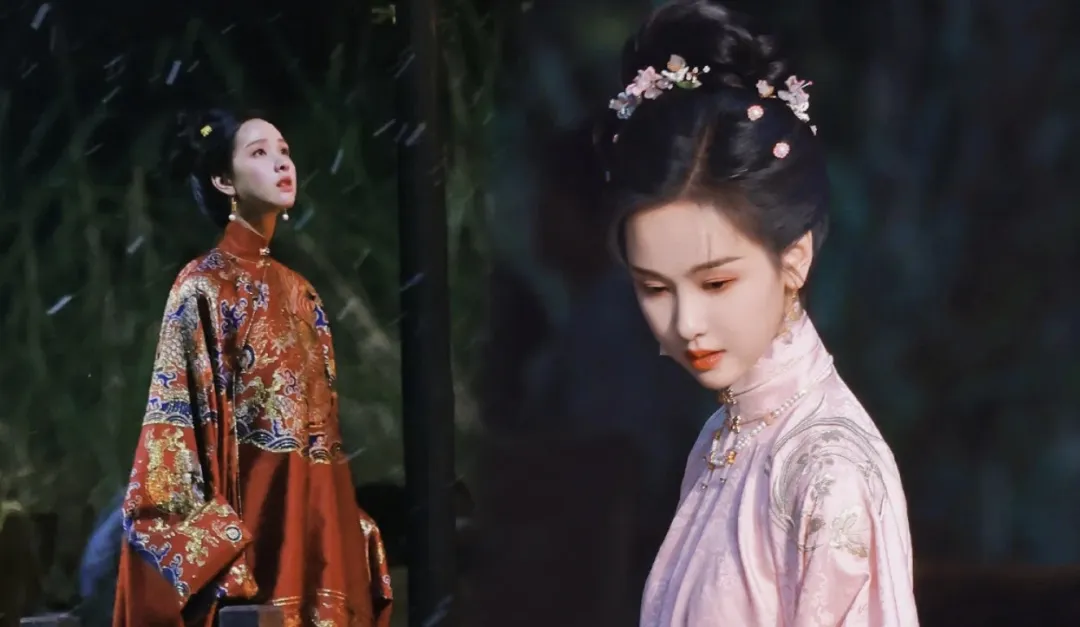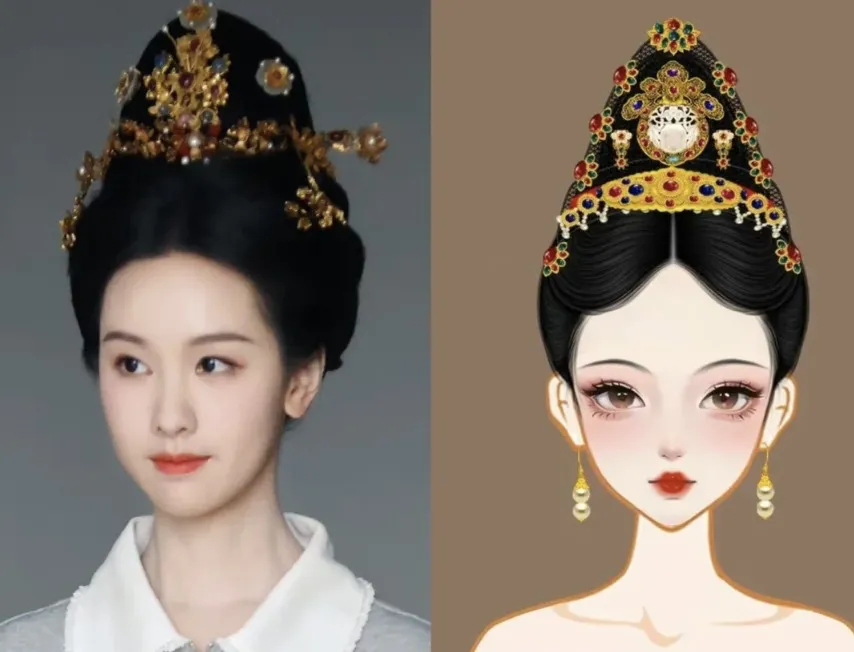The period drama 'When the Wild Geese Return' (also known as 'The Noble Lady') is a hit. But what was a 'noble lady' like in ancient times? Was she just decked out in gold and silver, flashy and ostentatious? The answer is no. Ancient 'noble ladies', mostly daughters of prestigious families, were defined by their status rather than blatant displays of wealth. This was in line with the aesthetic of the time - true nobility was understated, 'noble without being showy'.
Let's take the Ming Dynasty, the backdrop of the drama, as an example. Nobility in the Ming Dynasty was often reflected in unassuming yet substantial details. The 'diji' (䯼髻), developed from the 'teji' and 'guanzi' of the Song Dynasty, was the main headwear for married women. It was usually woven from silver or gold threads, horsehair, bamboo strips, or even human hair (some were made from paper or fabric) and covered with black gauze, like a cone over the hair bun. Various hair ornaments were inserted into it, including a 'fenxin' (worn at the center), a 'dian'er' (at the base), a 'tiaoxin' (at the top), a'manguan' (at the back), 'caochongzan' (insect - shaped hairpins on either side of the fenxin), 'jinhuatouyinjiaozan' (gold - flower hairpins with silver stems on both sides), and 'yanbin' (at the temples). These hairpins not only decorated but also secured the diji. The number of ornaments varied according to the occasion. The real luxury lay in the details, such as gemstones and delicate 'leisi' (filigree) craftsmanship. Some were family heirlooms passed down as dowries, representing a woman's dignity.
Earrings were also remarkable, often featuring hollowed - out jade ornaments carved by hand without modern tools. The combination of meticulous craftsmanship and gold accents showed both elegance and opulence.
Ming Dynasty clothing was relatively understated. The drama features late - Ming - style high - collar outfits with diagonal closures, while cross - collar jackets and shirts were also popular. These styles covered women modestly, with subdued color palettes. At first glance, they might seem 'plain', but on closer inspection, the intricate patterns and gold - silver threadwork in the fabrics revealed their sophistication. Even the buttons on high - collared garments were often made of gold, silver, or jade, sometimes inlaid with gemstones, a subtle mark of status. Commoners might use copper buttons and gild a few for special occasions. This explains why a noble's cufflink could cover a commoner's lifetime expenses, similar to the buttons on a noble lady's collar. Men's belt buckles, studded with gemstones and showing exquisite craftsmanship, also reflected high status.
Ming Dynasty women wore elevated shoes to enhance their posture, though the exact wearing contexts are unclear. Their everyday flat embroidered silk shoes were more elegant than the hemp shoes of commoners.
Beyond attire, a noble lady's refinement was shown in her education, manners, and poise. True nobility was about inner and outer cultivation, a confidence that radiated grace even in adversity. Today, nobility is more about inner values. May every girl embrace her own unique form of 'nobility'.



